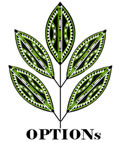This project follows on from previous European funded research projects encouraging African collaboration on optimising the use of pesticidal plants and improving the quality of scientific research focussed on agricultural production.
See project websites:
African Dryland Alliance for Pesticidal Plant Technologies project
Southern African Pesticidal Plant project

Presentations from the first OPTIONs training workshop on growing and using pesticidal plants. Workshop was held at the World Agroforestry Centre, Nairobi, Kenya, 28-30 October 2014
Pesticidal plants, an alternative to synthetic chemicals
Sustainable harvesting of pesticidal plants
Status and availability of germplasm of pesticidal plants
Making quality seed collections
Principles of propagation and cultivation of pesticidal plants
Using pesticidal plants for crop protection
Potential for small scale marketing of pesticidal plants
Current status of pyrethrum sector in Kenya
Overview of the organic agriculture sector in Kenya
Fact sheets have been created in collaboration with the World Agroforestry Centre and the Royal Botanic Gardens Kew. More information about these pesticidal species can be found on the Plant Database pages as well through ICRAF's species switchboard
Fact sheet about Aloe ferox
Fact sheet about Chenopodium (syn. Dysphania) ambrosioides
Fact sheet about Euphorbia tirucalli
Fact sheet about Solanum incanum
Fact sheet about Strychnos spinosa
Fact sheet about Tagetes minuta
Fact sheet about Tephrosia vogelii
Fact sheet about Tithonia diversifolia
Fact sheet about Vernonia amygdalina
Guidelines for the Sustainable Harvesting of Traditional Medicinal Plants - but just as relevant for harvesting pesticidal plants
Anjarwalla P., Ofori D.A., Jamnadass R., Mowo J.G. & Stevenson P.C.(2013). Proceedings of a training workshop on sustainable production, harvesting and conservation of botanical pesticides. World Agroforestry Centre (ICRAF), Nairobi, Kenya. 61pp.
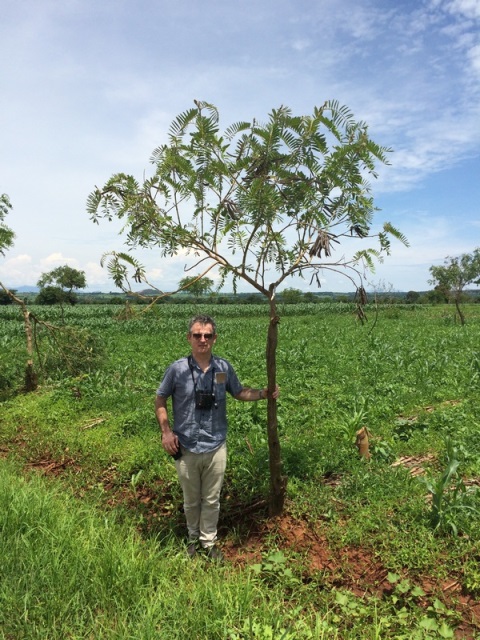
Throughout Africa, poor rural communities use their knowledge about plants to help protect field crops, stored grain and livestock from damage caused by insect pests. This information has been passed down from generation to generation and offers these people an effective, low cost, sustainable and environmentally friendly pest management strategy. Mankind has known about the insecticidal properties of certain plant species for millennia. Analysis of grain stored in Oriental (3000-30 B.C.), Greek (2000-200 B.C.) and Roman antiquity (500 B.C. - 476 A.D.) has shown that various plants such as Cymbopogon spp. that were used to protect stored food against insect damage are still widely used today in traditional farming systems. Other insecticidal plant compounds such as rotenone from Derris spp., Tephrosia spp. and Lonchocarpus spp. are produced as ‘organic’ pesticides by various commercial manufacturers and used widely in horticulture and agriculture across the world. Similarly, the neem tree, Azadirachta indica, one of the more famous botanical pesticides is still widely used today in South Asia and parts of Africa and is also available in various commercial products for pest management.
Why use pesticidal plants?
Most pest problems can not be resolved without some kind of intervention. Synthetic pesticides are usually the first line of defense for a farmer. They can, however, be toxic to users, consumers and the environment. In some parts of the world, particularly Africa and Asia, pesticides are less well regulated, and many more toxic products are still widely available and used. To make matters worse, the products are often adulterated by dilution, mixed incorrectly and sold beyond their expiry date and the use of these products can exacerbate the pest problem the farmers are trying to address by encouraging the development of resistance in the target pests. Furthermore, many products are sold with English instructions for use and safe handling rather than the local language whilst many users can be illiterate so the frequency of incorrect application can be high. Finally, these products come at significant cost to farmers which they may not be able to afford. Pesticidal plants offer these farmers a real and effective alternative to synthetic products.
Research has provided an understanding of the plant chemistry and modes of action for plant species already used by many farmers for pest control. This has shown that these pesticidal plants can be used reliably and safely to treat crops, grain and livestock.
Constraints
There can, however, be problems associated with the use of pesticidal plants including over-harvesting which threatens the diversity of habitats, particularly semi-arid woodland and savanah habitats. A better scientific understanding of how these plants work and where they grow will optimise their collection and sustainable use in Africa. Furthermore, efforts are needed to propagate and cultivate those species most at risk. Also all plants are not necessarily harmless, so a better understanding of their chemistry can help to evaluate the associated risks. For example, nicotine, the well known compound in tobacco plants is one humanity's oldest insecticides and the plant is consequently used for this purpose by some farmers. However, nicotine is also well known for its toxicity to man and so the use of tobacco plants for this purpose needs to be carried out with care.
Most African farmers depend upon their agricultural produce for their livelihoods so food security is their most important consideration along with factors that limit production of sufficient food for their families. However, adequate yields can be secured through improved crop management and food storage, and where surpluses can be produced, these can generate additional income and a potential route for African farmers to improve their livelihoods and raise themselves out of poverty. Food production and storage are limited by numerous constraints but insect pests are arguably the most important since they are a constraint over which even the poorest farmers can have some direct control with low cost interventions. If left unmanaged, insects will invariably cause severe damage.
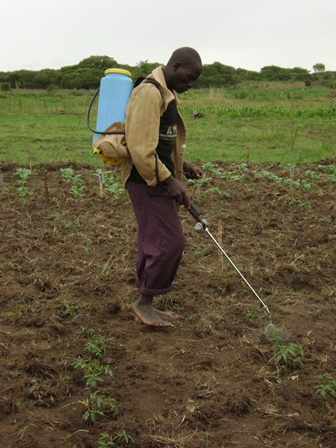
Commercial insecticides are usually effective but they have limited distribution in rural areas. Worse still they are often adulterated (diluted to ineffective concentrations by unscrupulous traders) or applied at inappropriate application rates due to illiteracy or poor labelling and increasingly are ineffective owing to the wide occurrence and rapid evolution of pesticides resistance. Health and safety is also a serious issue since insecticides are typically applied with no protective clothing; there is no mechanism to ensure food safety for consumers, and little concern for chronic effects of exposure. The environmental impact for wildlife, crop pollinators and natural enemies is also severe while the cost of correctly applied synthetics can be prohibitive.
Farmer surveys about synthetic insecticides conducted in Africa highlight all these problems which are well understood by farmers and have led to many avoiding commercial products altogether and looking to alternatives. Intervention is necessary since severe losses in most field crops and in storage is otherwise guaranteed. A recent study estimated that for cereal grains alone, post-harvest losses reached nearly US$4 billion annually in SSA, 13.5% of the estimated US$27 billion value of cereal production. With stored grain losses estimated to be similar in quantities lost, this is arguably the most important target for food security and agricultural development in Africa. Livestock continue to endure severe morbidity and poor productivity due to ectoparasites and fly-transmitted diseases, and in many locations across the target area for this project where traditional food crops cannot easily be grown, livestock provide an alternative agricultural income for farmers. Pesticidal plants or botanical insecticides are an effective alternative to synthetic chemicals for the control of arthropod pests. Their promotion, particularly with optimised application protocols, improved access to materials through propagation using established techniques and and cultivation and effective extension services would have enormous impact on pest management and ultimately food security.
Plant materials are known by farmers to be environmentally benign, safer and cost-effective compared to synthetic pesticides1, as well as being difficult to adulterate when produced or harvested by farmers, themselves. Most persuasive of all is that their cost to farmers is substantially lower than synthetic products and can be calculated simply in terms of time to harvest and process. Generations of farmers have used plants in this way, making the technology familiar, trusted and acceptable, but their priority in agricultural policy is low. This is due to knowledge gaps or may be because there are few commercial incentives or revenues to drive policy and uptake as is the case with commercial synthetic pesticides. Their successful commercialisation has been realised through only a handful of products including Pyrethrum. However, owing to the cost of registration, even Pyrethrum products in countries where it is produced such as Kenya are registered for relatively few domestic uses, such as against mosquitoes and pets and are not widely used in their horticulture industry despite Pyrethrum being considered acceptable under organic regulations.
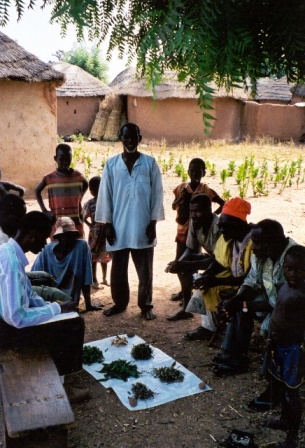
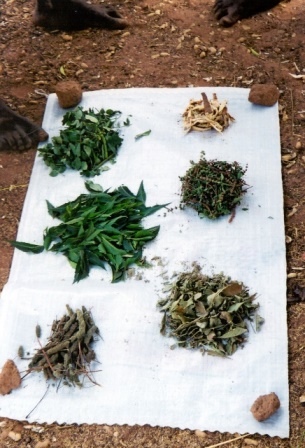
What is clear is that plants are effective, low cost, and provide an effective tool for managing insect pests, especially for small holder farmers. However, the realisation of their full potential, especially for the poorest farmers, is constrained by inadequate product quality evaluation and development, which, if improved, will increase the reliable options available to farmers. This project aims to address this directly through the propagation of indigenous and exotic pesticidal plant species and by improving science technology and innovation for commercially viable botanical insecticides such as Pyrethrum.
